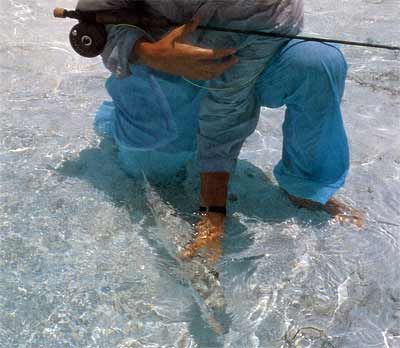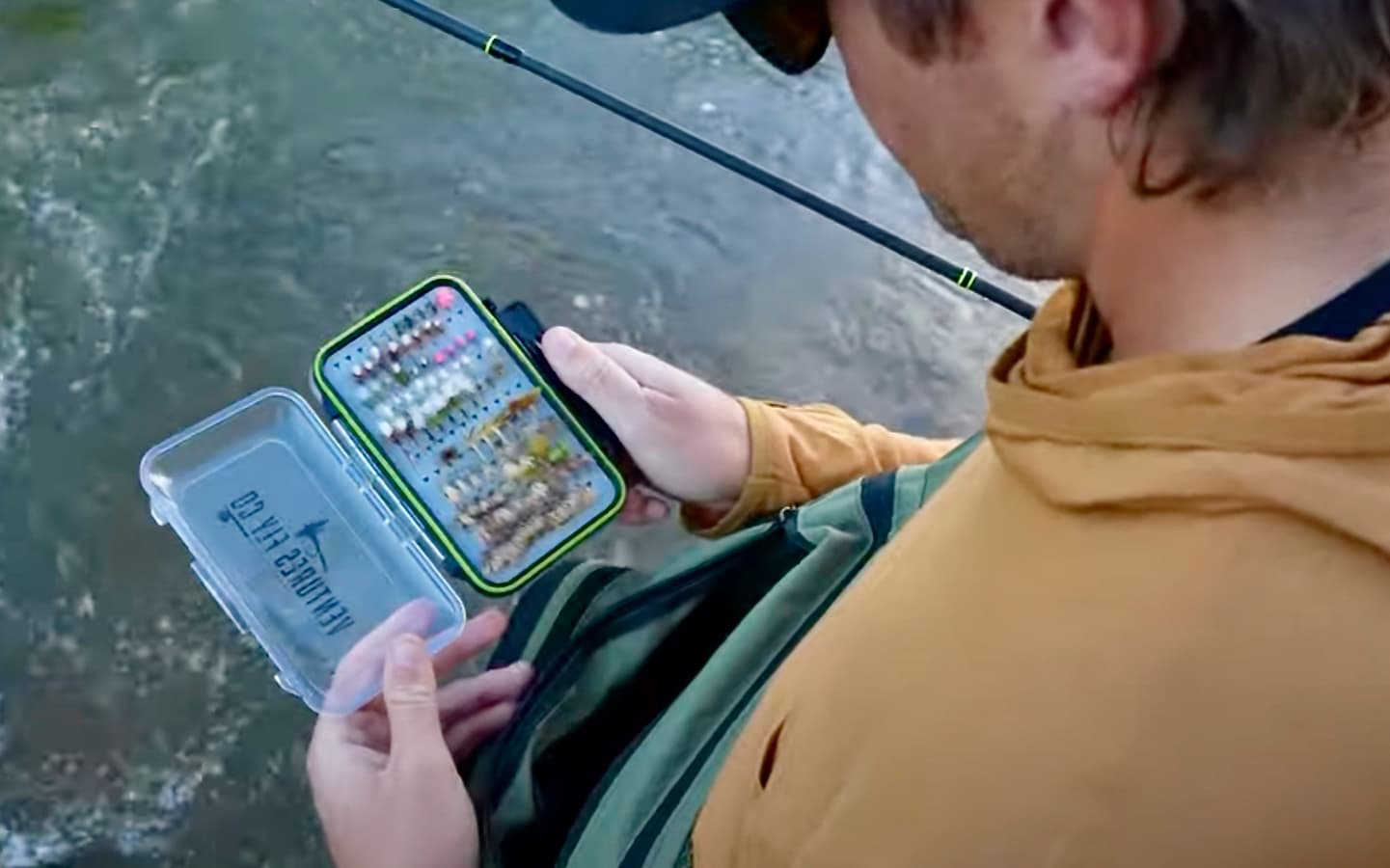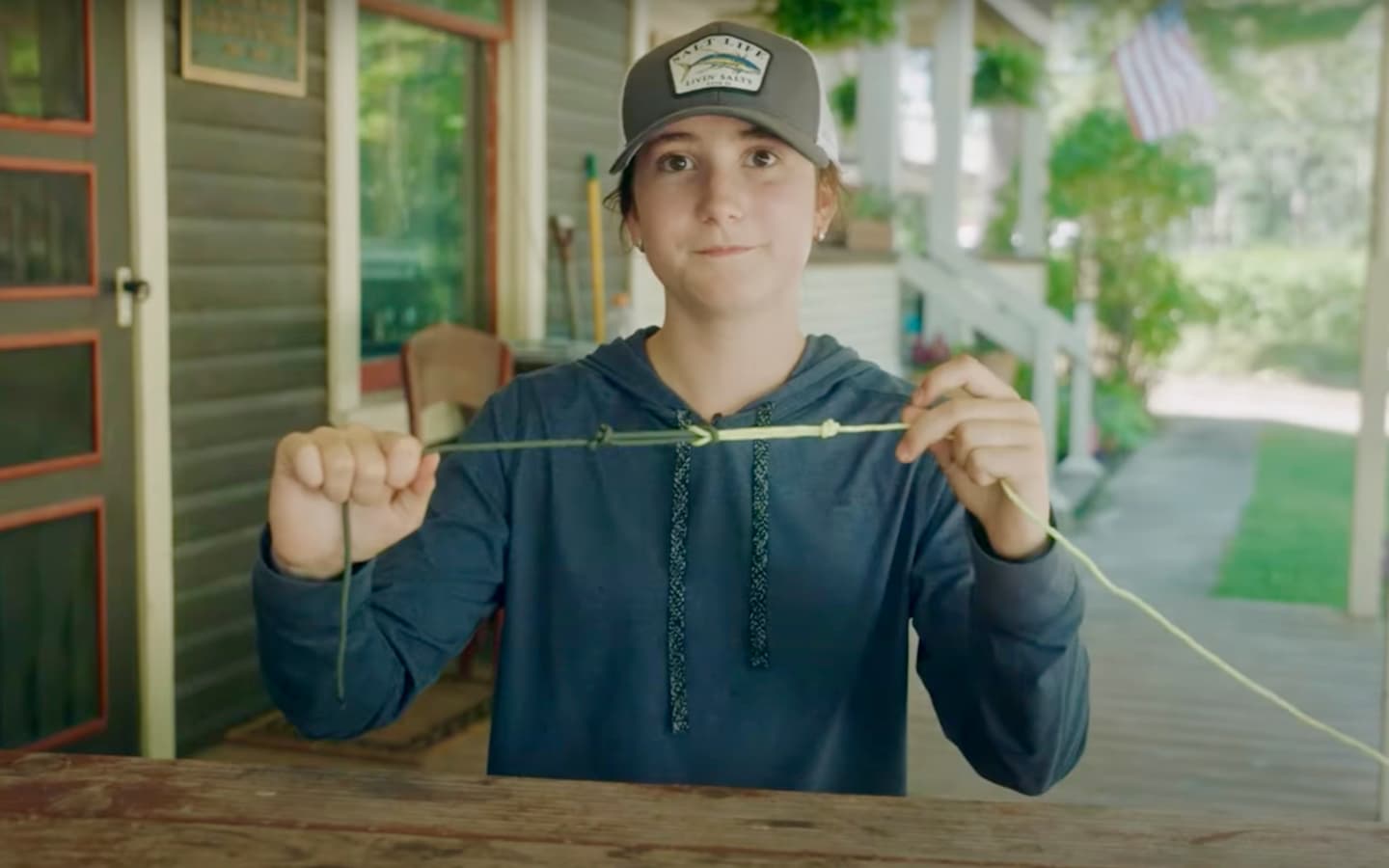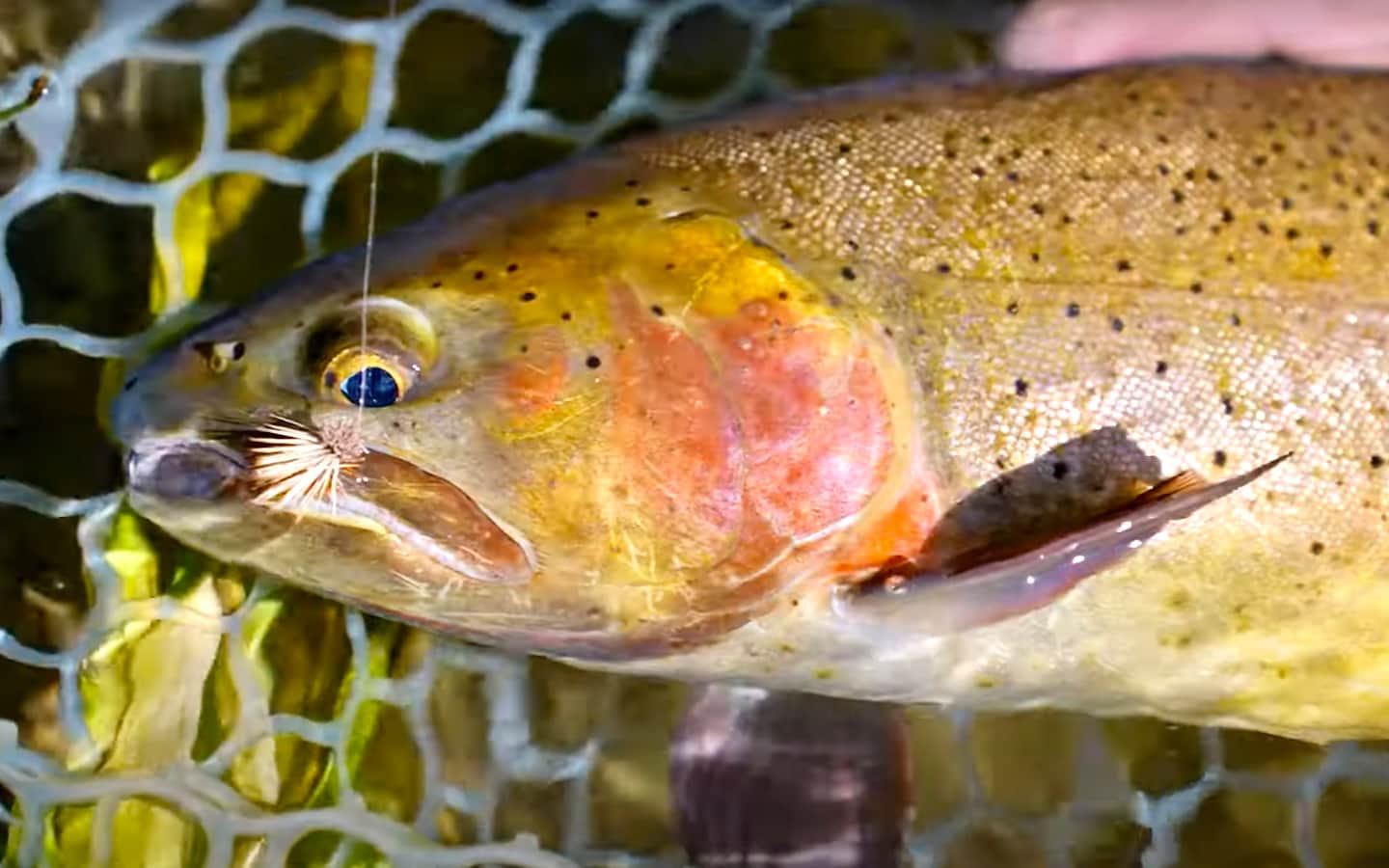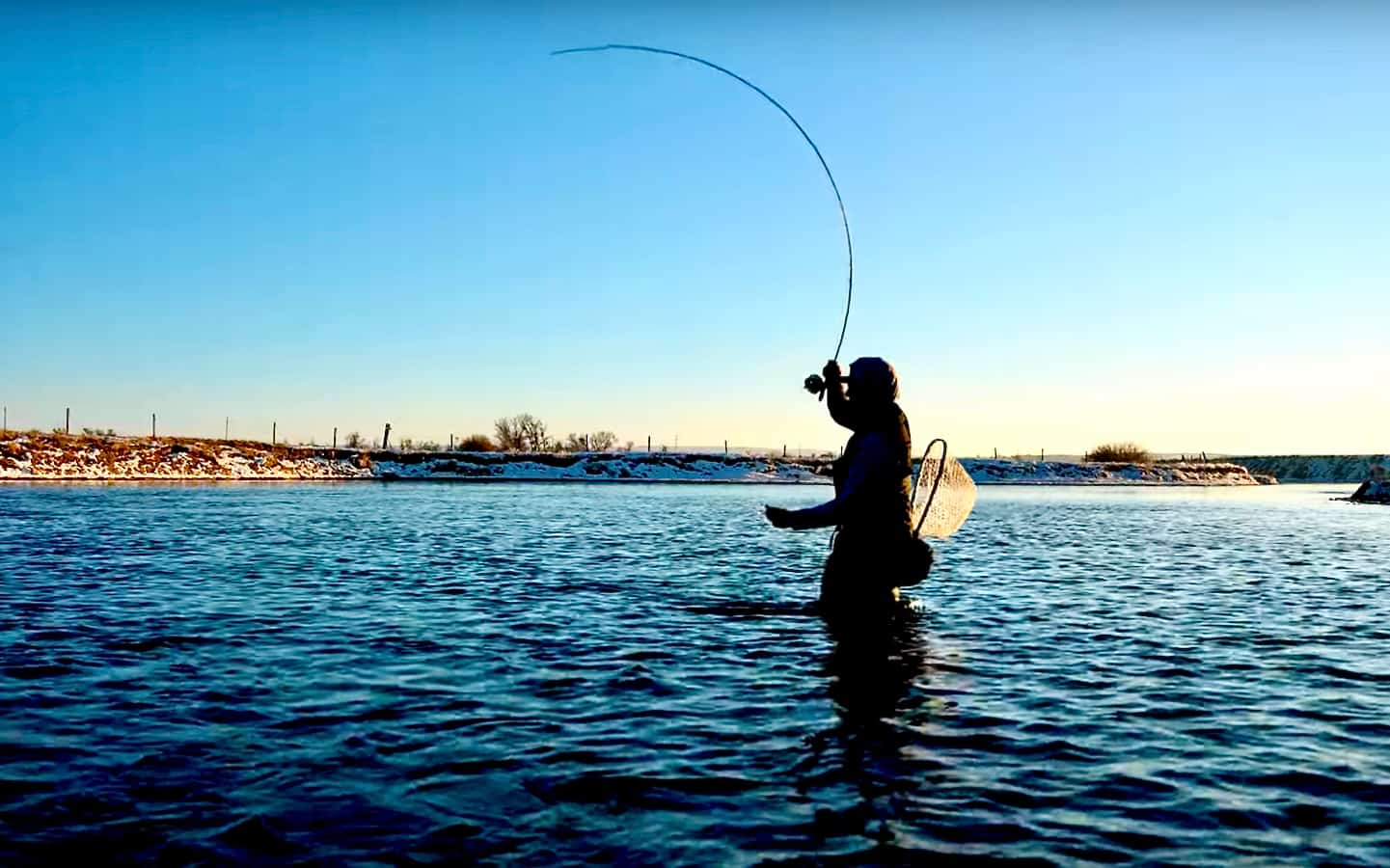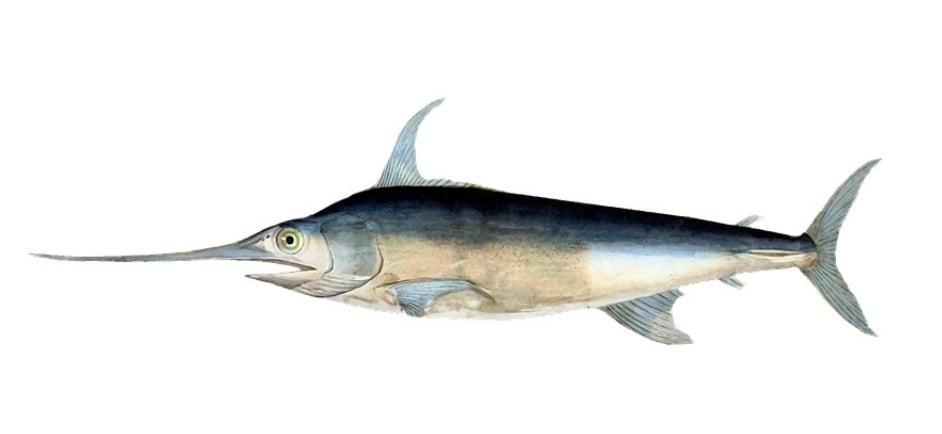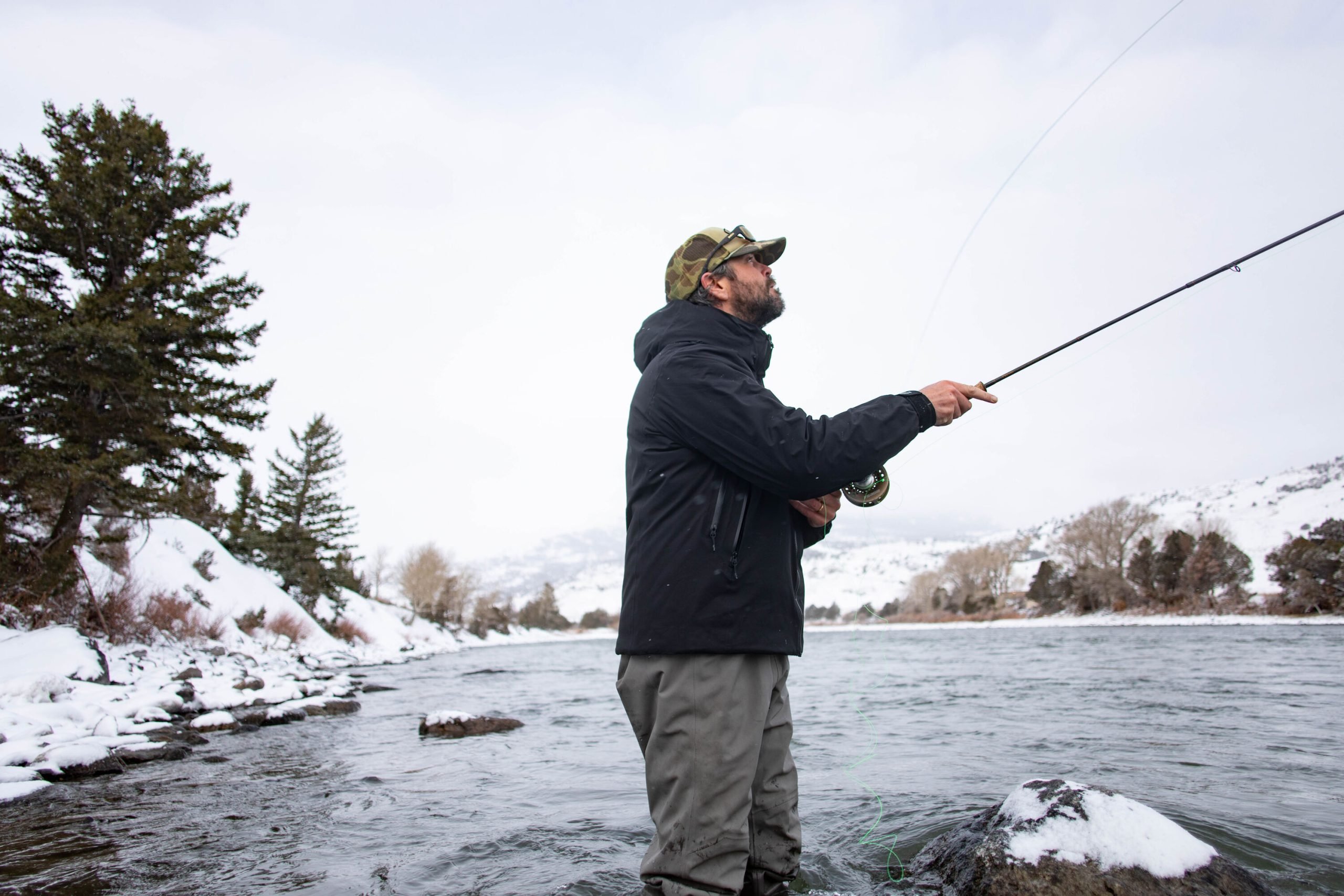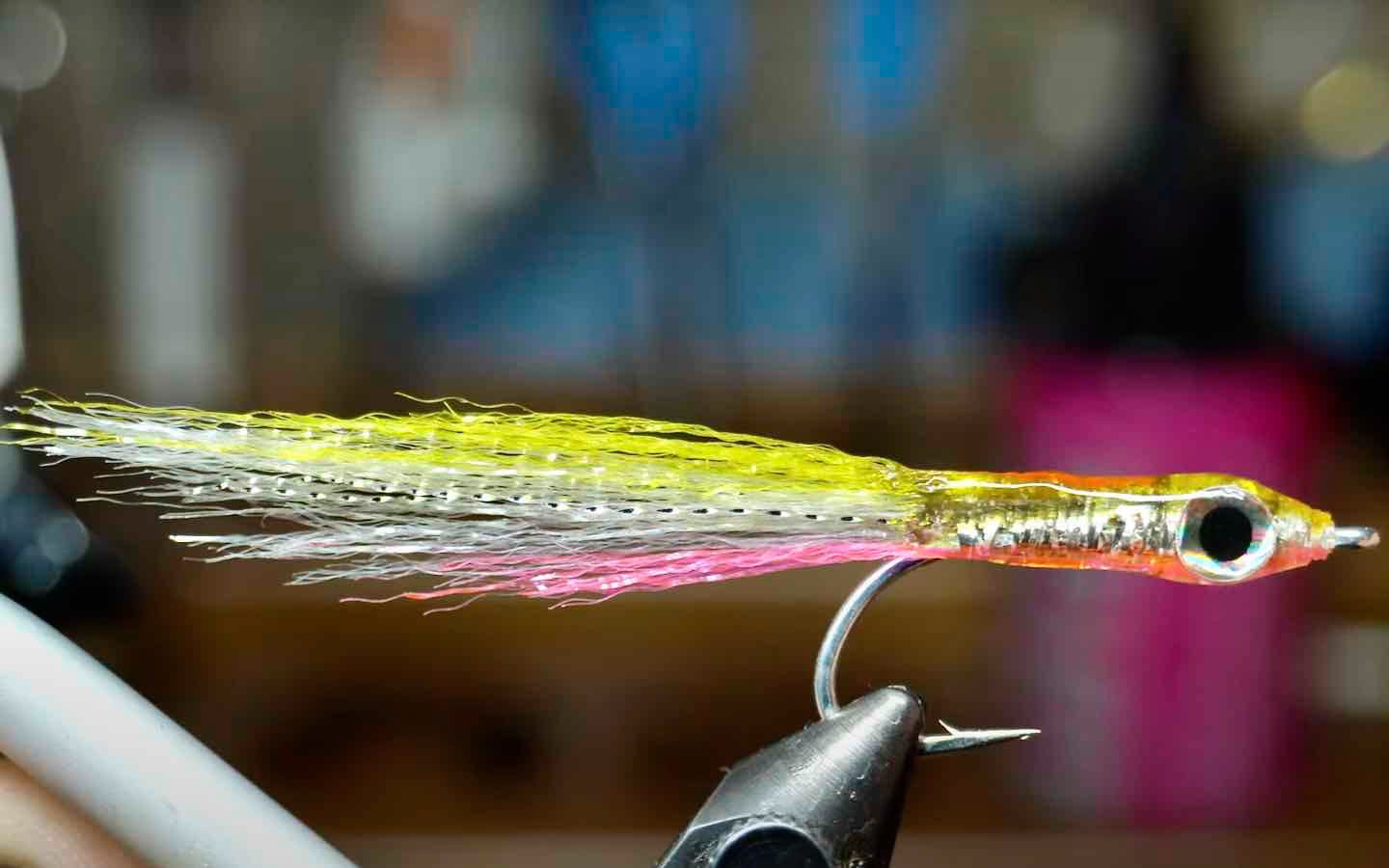Walking Sticks
WHENEVER THE PROSPECT exists for stalking bonefish in really calm or super shallow water, I pack a 9½-foot, 6-weight rod. On some trips, the longer stick never sees the light of day, but when the conditions make for spooky fish that require soft presentations and long leaders, nothing else will do.
Such was the case a few years ago when I fished with a friend for bonefish and permit in Roatan, a small island of Honduras. The first two days we cast to bones swimming in about a foot of water, but we were not finding many fish.
On the third day, a local guide took us to a remote area many miles overland and a 20-minute skiff ride away. This new fishery greeted us with ideal conditions, and bones tailing here and there. Despite a medium incoming tide, the water level on these large, outside flats seemed low — and the fish were spooky. The sound of the pole on the hard coral bottom didn’t help, either. So we took out our 8weights and decided to wade.
Within a couple hundred yards, we encountered bonefish — singles and doubles nervously tailing all over the long, narrow flat. Anything other than a good approach and a well-placed first cast sent them racing to deep water. We managed to hook a couple of fish but lost them on the coral. Still, we were happy; there were miles of this hard ocean flat, many bones, and the occasional permit and large triggerfish.
When the tide turned and began to recede we could see more fish, but the presentations from the 8-weights landed like bricks on the water. And the size 4 weighted flies were too heavy. The 10-foot leaders were too short, and the fish kept cutting off the 12-pound tippet against the coral. Every time we made a cast to a particular fish, we would spook it and all the others within about 200 feet. It was obvious we were not going to catch anything else with the 8-weight setups. My friend and I decided to walk back to the skiff.
When we got to the boat, I took out a 9-foot, 6-weight rod. I rigged it with a 14-foot leader with 50 percent butt section and three feet of 8-pound tippet. I tied on a size 4 Bonefish Special, sparsely dressed and unweighted. Now I was ready for a soft landing.
If you have studied the bonefish flats, you know they are not exactly flat. They taper, getting deeper as they decline toward the ocean. Even within a small area, there are deeper pockets and ledges of shallower water.
By the time we got back to the fish, the high ridges probably had five inches of water. Some deeper pockets between the ridges still had 10 to 12 inches of water. Fish were tailing in nearly all these depressions, but still they were quite spooky, as they tend to be on receding tides.
I positioned myself near the edge of the flat where it tapered off, so that any fish I hooked would run out of the shallows into deeper water and away from the coral. My first cast told the story. The fly landed softly, and the dainty splash from the line landed 14 feet away from the fly and about 16 feet from the target bonefish. In that clear, shallow water, the fish rushed to the fly and quickly took it. I was on.
As the bone headed for the deeper water, I held the rod high over my head to try and keep the leader and fly line from rubbing against the sharp coral. Soon the fish was fighting hard in water several feet deep.
It was nice for me, but my friend had not packed anything lighter than his 8weight. He just watched. By the time we ran out of water and got back to the skiff, I had landed three bones, each between five to seven pounds. The soft landing had made the difference between taking three fish and taking none. The rest of the week, faced with similar conditions, my friend and I took turns with the 6-weight and the cameras and left the heavier tackle in the skiff.
The Quiet Approach
While the long rod is a great tool for wading very shallow or flat, calm waters, it also offers an advantage for casting from a skiff when delicate presentations are of the essence. And with fish getting more and more pressure from anglers these days, subtle presentations are increasingly important. And it’s not only the big bones in the Keys that need extra care; bones in the Bahamas, Belize, and Yucatan have seen enough flies that they often require the extra finesse of a long rod. The same goes for shallow-water redfish.
Depending on conditions, the long, lightweight rod may be your second or third choice, but it’s a tool you don’t want to leave behind. For quiet presentations on short- to long-range targets, the long rod has several advantages.
When you first start to cast to a fish in the flats, with your eyes glued to the target, you may notice that the longer rod gives you more feel for what’s going on in the stroke. Because longer rods tend to be a bit softer by design, you can feel the rod load even with only a little line out. Too many of today’s high-performance rods are too stiff for the average sightcasting distance. You’ll probably like the “touch” of most good 9 1/2-foot rods — primarily because you can feel it.
As you cast, you’ll also notice that the longer rod can easily handle a longer leader, meaning 12 feet or more. The extra length lends to quieter presentations. And, while there is no substitute for learning how to cast, the longer rod will help you keep your backcast just a little bit higher (if you don’t drop the tip to begin with). Remember, rods don’t come with tight loops, just as tennis rackets don’t come with backhands.
There are other advantages to the longer rod. If you cast to a fish and miss your target, say a bit too far to the left, you can try to correct it by just picking up the whole line and laying it back a few feet to the right. And chances are good — with the long leader and soft splash — that the errant cast didn’t frighten the fish. Often this second attempt will do the job. The longer rod can also pick up and hold more line in the air than a shorter rod.
Due to the softer design, longer rods are more forgiving to the pull of the fish; so the fish is less likely to break off. And that is perfect if you are fishing with a light tippet, when it is most important to have the rod working for you.
Bigger Game
Up to this point, I’ve talked only about long, 6-weight rods, but when you are casting to bigger fish in calm conditions, long 7- and 8-weights are just as effective. Use the 6-weight for average bones and redfish. Use the long 7- and 8weight rods to cast bigger flies and midsize crab patterns to the big bones in the upper Keys and even permit. I’ve landed many big bones and redfish with a long 6- or 7 -weight rod and a few permit with long 7- and 8-weight rods.
Tailing permit, especially in really shallow water, can be quite a challenge to approach. They often require a very quiet presentation and a long cast. This situation is often best dealt with by wading and carrying a long stick.
Another fish that is difficult in the flats is a large sea trout. Unlike the bonefish and redfish, which are bottom feeders and are often looking down, a sea trout is mostly looking up for baitfish, which makes it easier for it to detect an angler. Here again, long delicate casts are of the essence and often with a large, mullet-size fly. A 9-foot, 7- or 8-weight rod is just the ticket.
But if you go for a long rod in any size above an 8-weight, you’ll find they are tiring to cast, and the element of delicacy will have disappeared. The best place for these heavier long rods may be in making distance casts with big flies from the beach.
Length Limits
While longer rods do have their advantages, nothing is perfect. If you are wading the open flats and hook up, the extra length makes landing a fish a bit more difficult. You’ll also have less leverage against the fish. And if you are trying to keep a big snook from getting back to the mangroves, you can probably forget it; in this situation, a shorter rod has the edge. Longer rods also do not punch flies through the wind very well; they are made for casting line, not shooting it.
Smooth in casting — even elegant — long fly rods are a pleasure to use. And when conditions are shallow and calm, and the fish get spooky, they can be a wonderful tool, perhaps the only one, that will truly help you catch fish.
